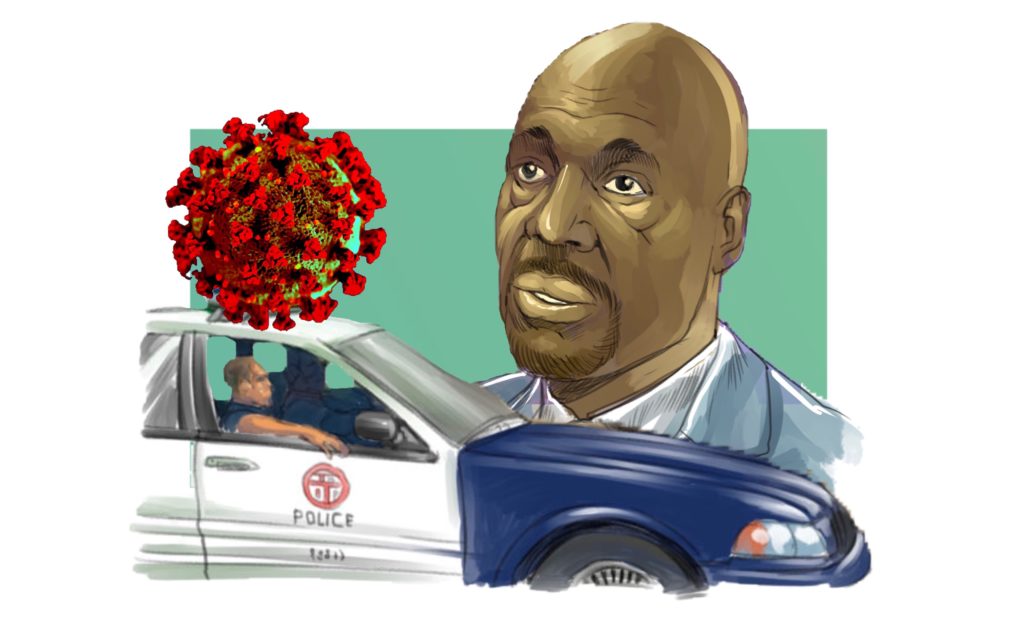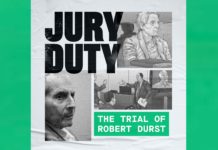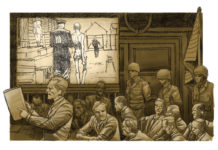As the effort to “flatten the curve” of the COVID-19 outbreak intensified and stay-at-home orders affected all but 8 American states, at crimestory.com we intensified our commitment to present stories reflecting how the public health crisis is impacting the world of crime and justice.
The week began with Amanda Knox and Christopher Robinson continuing their interview series Exoneration and Incarceration in a Time of Pandemic.

On Monday, we presented Gavin Newsom’s Outbreak of Mercy in which Amanda and Chris interviewed California Innocence Project (CIP) Director, Justin Brooks again, this time to seek his reflections on California Governor Gavin Newsom’s decision to grant clemency to 26 incarcerated individuals including four clients of the CIP.
As Amanda says in introducing the interview: “The decision to grant their clemency petitions came shortly after news that COVID-19 had begun to spread throughout the California prison system. Newsom’s office stated that, ‘In addition to the public safety and justice factors that the governor normally considers when reviewing clemency cases, he also considered the public health impact of each grant, as well as each inmate’s individual health status.'”

On Tuesday, in An Exoneree’s Quest for Peace in Quarantine, Amanda interviews exoneree Josh Kezer, who spent 16 years in prison before his conviction was overturned and he was released in 2009.
Amanda reached out to Josh to ask how his own wrongful conviction and his connection to sexual assault survivors are helping him find peace during quarantine.

And on Friday, we presented another in our series of conversations with Paul Butler, Crime Story Consulting Editor, Georgetown Law Professor, former US Department of Justice Prosecutor and MSNBC Commentator.
In our conversation, entitled Crime and Injustice in a Time of Pandemic, Paul and I discuss his recent essay for Crime Story about policing in the context of COVID-19, as well as many other issues related to the criminal legal process that have arisen or intensified as the virus has spread. We also talk about the hints of public corruption that have appeared in press articles, as well as the disproportionate impact that the virus appears to be having on the African American community.
For those of you wondering how you can catch up on previous Crime Story newsletters, just click here and your question shall be answered.
As is our new custom, we present a summary of Hannah Teich’s curated selection of some of the more interesting stories from Crime Story Daily over the past week. (In order to get to the full essay and the story links, please click through this link to Hannah’s piece at crimestory.com.)
On the criminal justice policy front:
A piece from the Guardian highlights the “previously unthinkable” reforms made possible by the pandemic,
Politico reports that on Monday, Attorney General Bill Barr issued a memo to top federal prosecutors around the country, urging them to consider the risks inherent in increasing the jail population as the virus continues to spread.
And the Sacramento Bee reports that California court leaders have voted to temporarily end cash bail for suspected low-level offenders.
Meanwhile, a piece from the New Republic focuses on New York, where Governor Andrew Cuomo has quietly rolled back significant portions of the state’s controversial bail reform law.
In muckraker/watchdog reporting:
A piece from the Atlantic focuses on California, where emergency measures related to COVID-19 have scaled back the rights of criminal defendants.
New York Magazine goes inside New York City’s Rikers Island jail complex.
A piece from the Intercept looks at Louisiana, which has both the highest incarceration rate in the country and one of the worst virus outbreaks.
And NPR goes inside the Federal Correctional Complex in Oakdale, Louisiana.
In complex crime storytelling:
Texas Monthly focuses on the case of Rosa Jimenez, who was accused of murdering an infant she was babysitting in 2003.
And a piece from the New York Times details how a veteran criminalist in New Hampshire successfully utilized “old school” techniques to identify human remains found more than 50 years ago.
And in culture/true crime:
The New Yorker interviews John Springs, a pulp-fiction novelist incarcerated on Rikers Island during the pandemic.
New York Times reporters share the true crime stories that have stuck with them over the years.
And New Yorker critic Doreen St. Félix explores the culture’s fascination with “Tiger King,” the new true-crime series from Netflix.
Again, you can click here to go to Hannah’s weekly essay and find links to those articles.
Thanks for reading and listening.
Kary Antholis
Publisher/Editor, Crime Story






